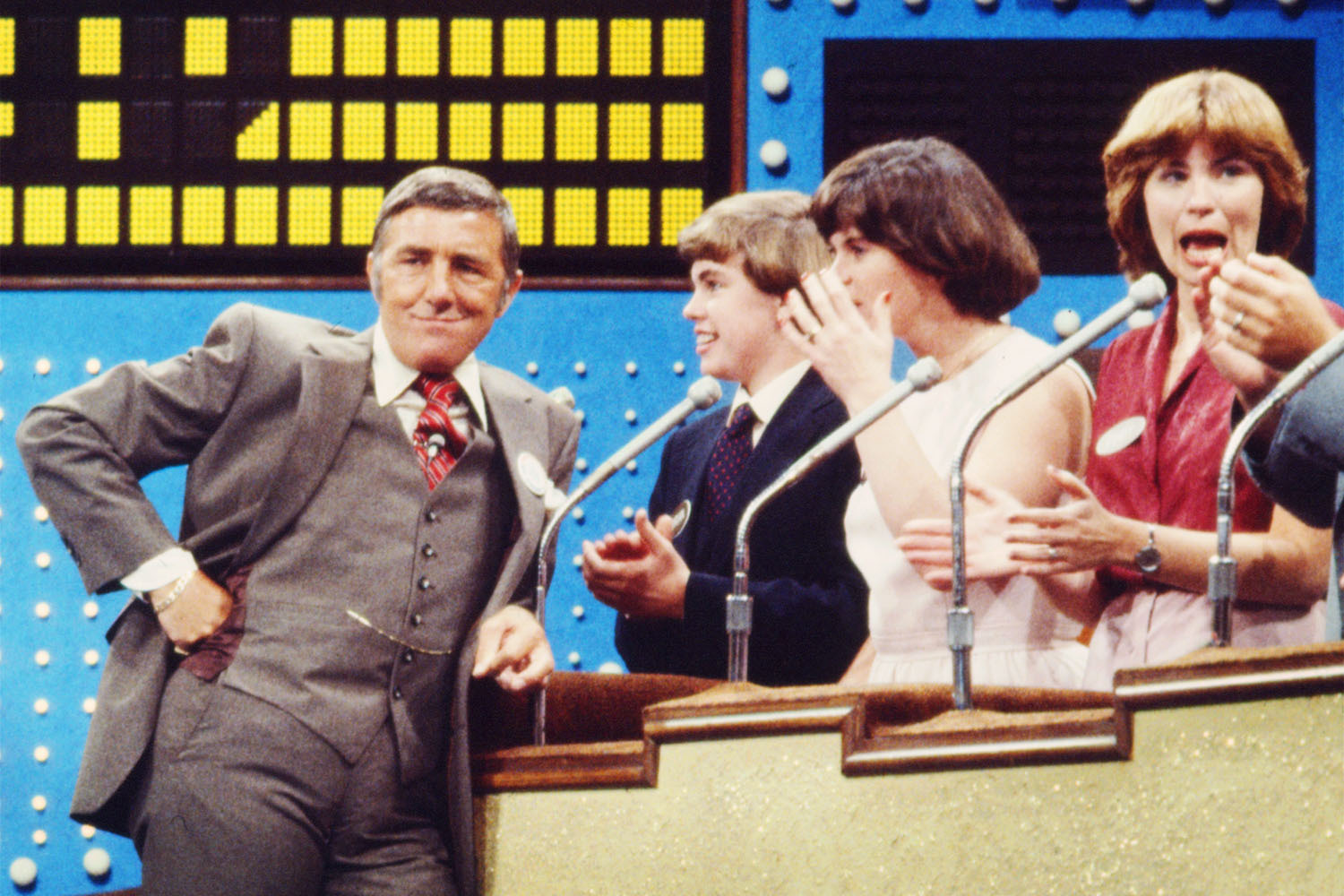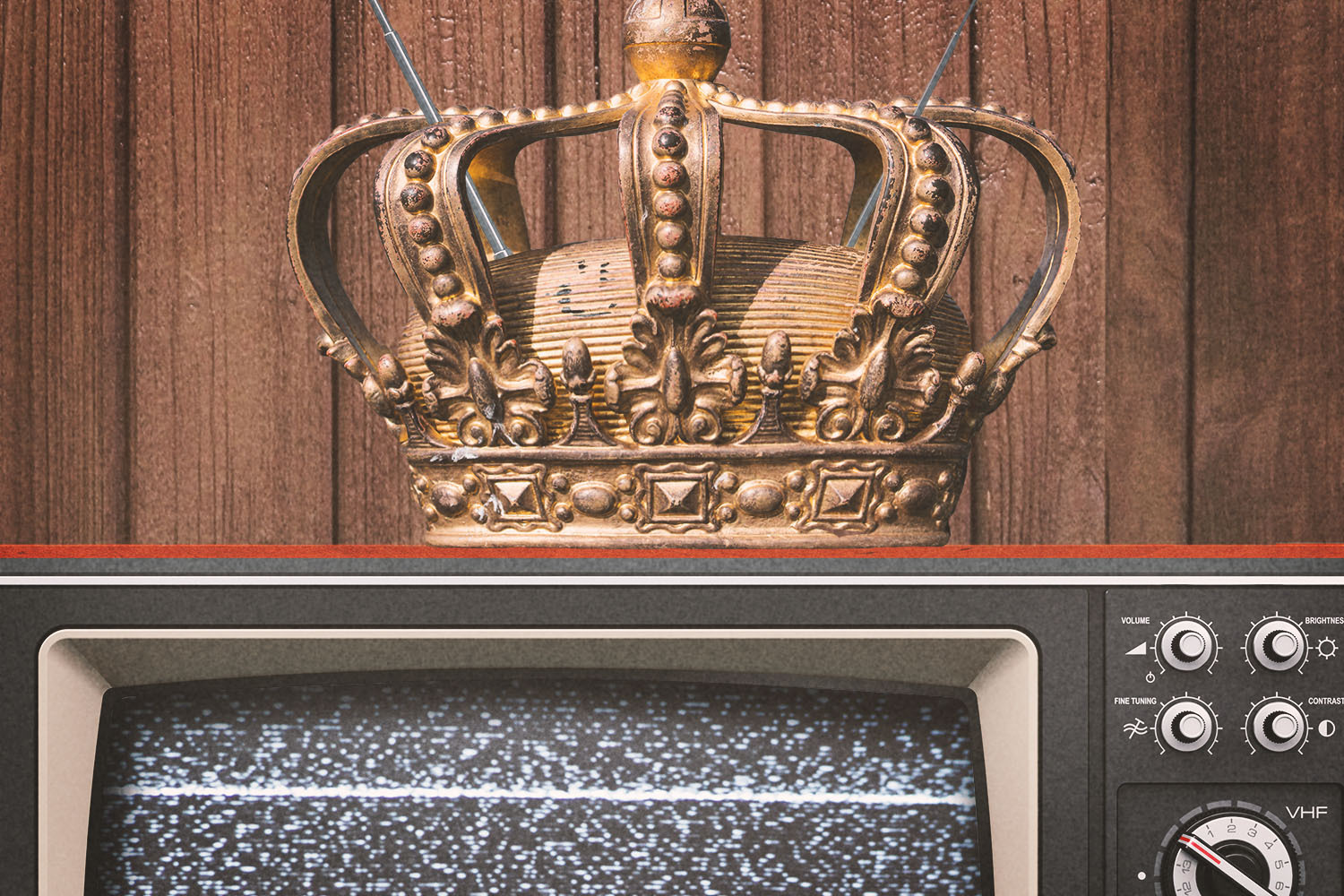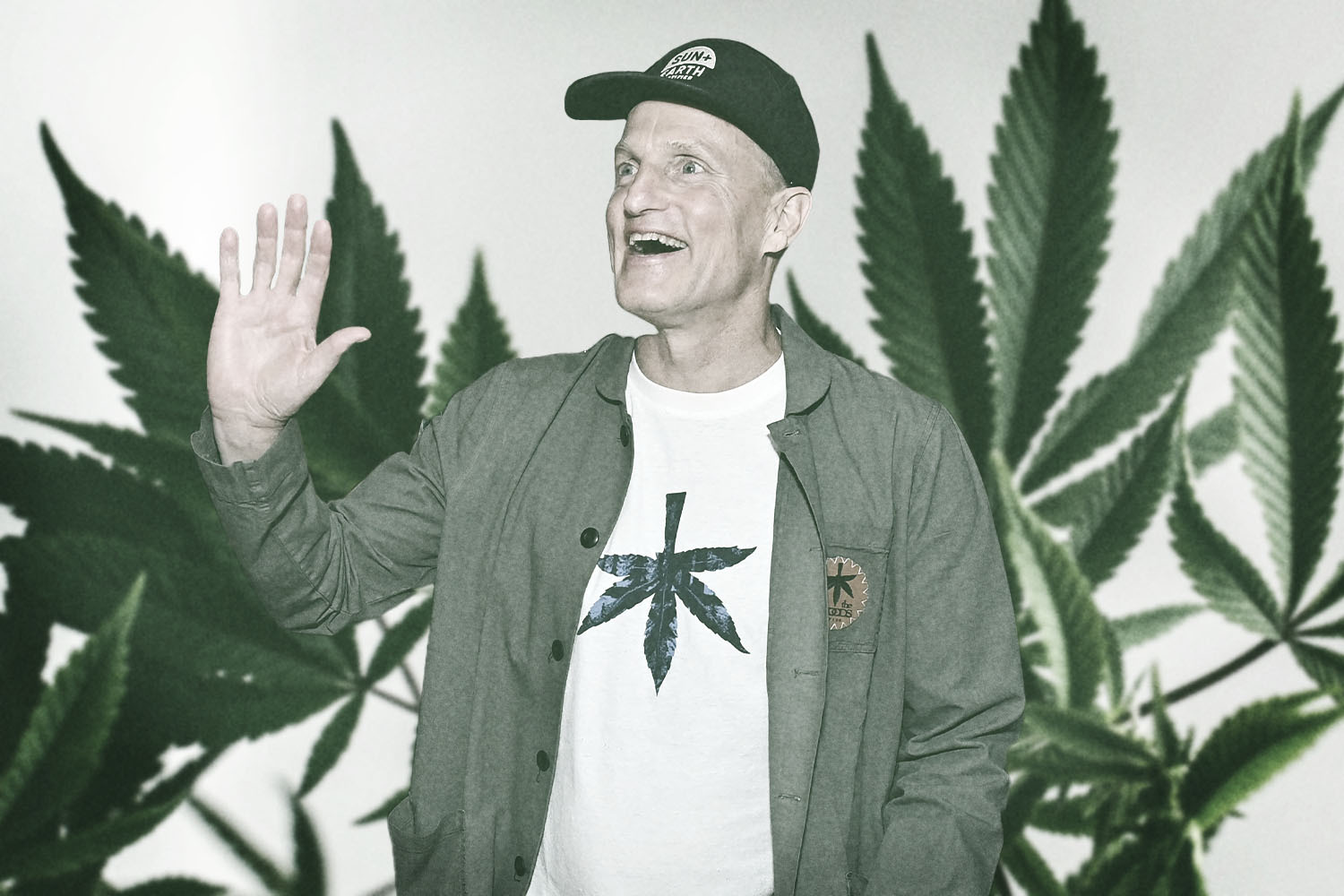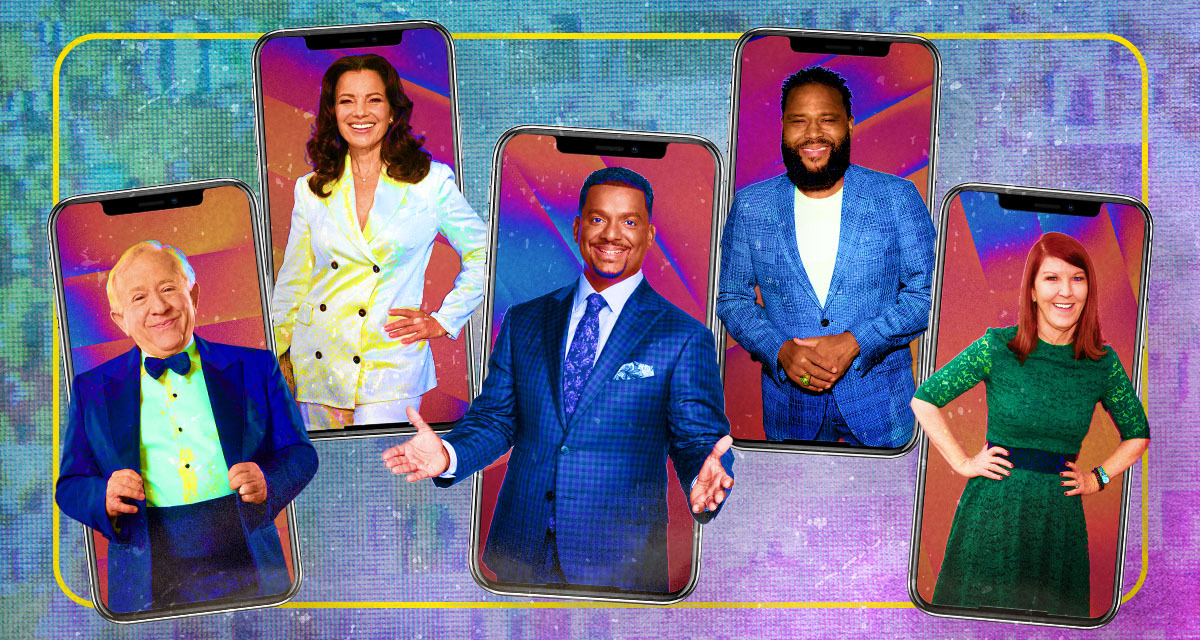
I’m not sure when I first heard of Cameo. You know, the app that lets you buy personalized greetings from celebrities for your friends, family and even your enemies. But it was suddenly everywhere, the kind of pop culture talking point that gets name checked on two different SNL sketches in the same night.
Season two of Netflix’s docuseries Cheer, which dropped earlier this year, opened with a montage of its cast members fulfilling a seemingly endless flood of Cameo requests. To be clear, these were cheerleaders at a community college in rural Texas. And some of them were charging more than $100 for a 30-second video message. It wasn’t all fun and games, though. Republican governor Chris Christie had been doing Cameos for charity (at $199 a piece) until he was duped into trolling a fellow Republican from Montana. Cameo was the new attack ad. Pennsylvania Senate candidate John Fetterman’s campaign enlisted Jersey Shore’s Snooki to make a Cameo roasting Dr. Oz for leaving the Garden State ($393). Rudy Giuliani, meanwhile, had also been active on Cameo though not for charity; Rudy was reportedly making videos at $349-a-piece to cover his own mounting legal fees.
“Legal fees, marital fees, divorce fees, rent fees, probably dinner fees,” said one-time Trump fixer Michael Cohen with a laugh. Cohen had also joined Cameo ($109), he said, “while I was on home confinement. I used it as another way to keep myself busy. But also to provide entertainment to people who I suspect are fans.”
More than 1 million messages were sent on Cameo last year. And the pitch was compelling. If you couldn’t make it to your mom’s 75th birthday or your cousin’s college graduation, you could suddenly send a celebrity in your stead. For $699, Curb Your Enthusiasm’s Susie Essman promised: “If you need somebody to be told to go fuck themselves or be called a fat fuck— The possibilities are endless.” Brian Cox from Succession (also $699) made a similar offer: “I play Logan Roy and if you want me, I will tell you to fuck off in a very uncertain manner. Have fun and get in touch. And fuck off.” If your tastes ran less prestige TV and more Bravo, Luann de Lesseps from The Real Housewives of New York City was one click away. “Money can’t buy you class,” she said, “but it can buy you a Cameo from me.” ($139.)
Cameo was a legitimate pandemic success story — a Silicon Valley unicorn rising from the ashes of used nasal swabs and CVS receipts. The company launched a new tier, Cameo For Business, in 2020, and their clients included luxury brands like the carmaker Infiniti and the designer Marc Jacobs. Thanks to an influx of cash from investors including Google, Amazon and Softbank CEO Masayoshi Son’s Vision Fund 2, Cameo’s valuation hit $1 billion dollars.
But then the pandemic ended. Or at least people pretended it had ended. And now that everyone was leaving the house — and no longer needed to send birthday greetings from Jerry Springer ($139) or Jan from “The Office” ($499) — the rocket ship appeared to stall. Cameo co-founder and CEO Steven Galanis had previously told CNBC he’d hoped to go public—as early as the end of 2022 — but those plans were now TBD. In May of 2022, the company laid off 25% of its workforce after “a slowdown in business,” reported the trade paper Variety.
What was going on? Was Cameo a passing fad or an essential part of men’s lives? More importantly: Who at Cameo had to onboard Rudy?
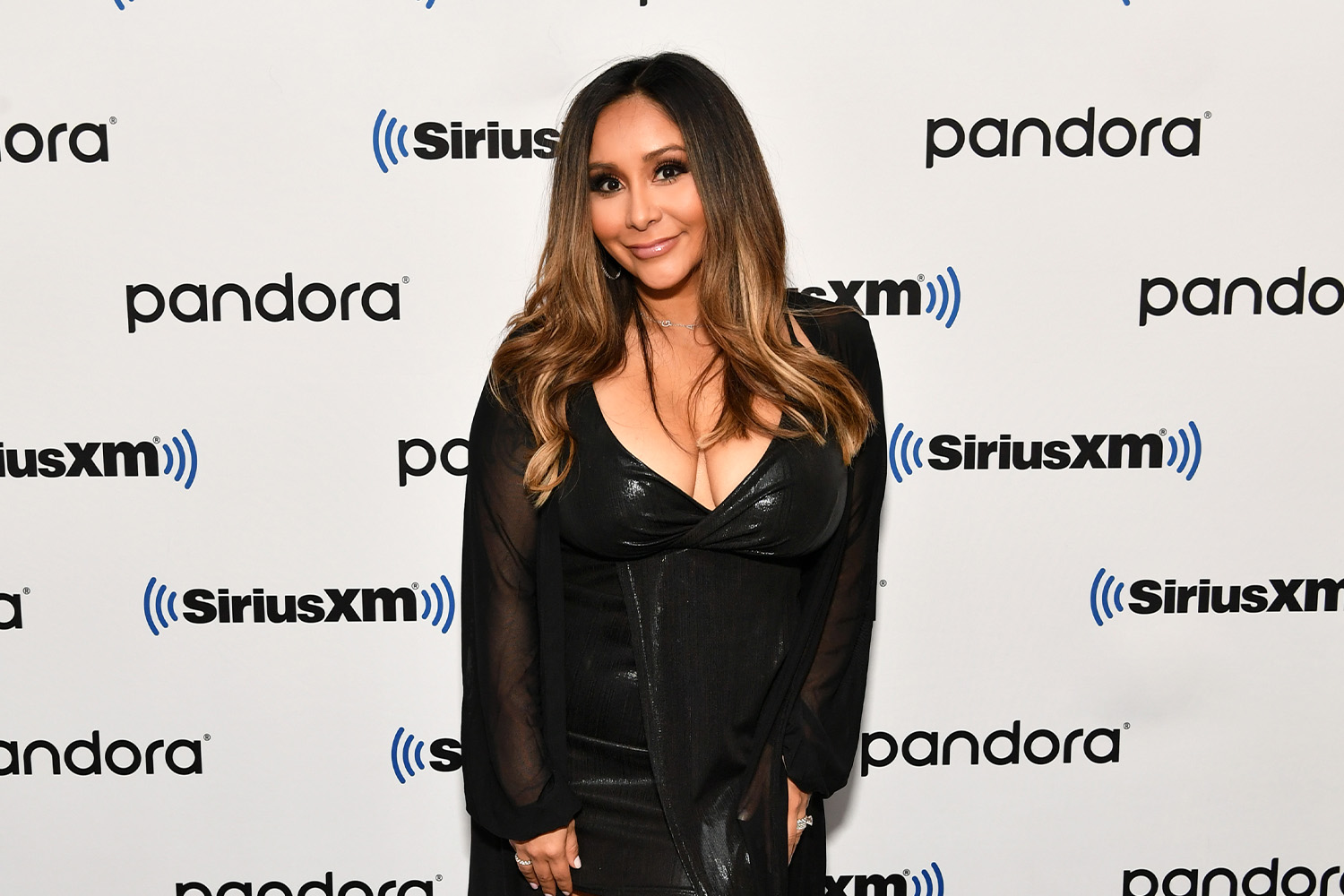
Cameo was started by three women from Smith College. Just kidding. It was launched in 2017 by two fraternity brothers from Duke — Galanis and Devon Townsend—plus a former sports agent, Martin Blencowe, who’d produced a TV show with Galanis called SAF3, which starred Dolph Lundgren and apparently concerned the Malibu Fire Department. (Said Galanis: “It was probably the worst TV show ever made. Never watch it.”)
Cameo’s origin story is both compelling and a touch morbid. As legend has it, Galanis was at his grandmother’s funeral when Blencowe showed him a video message one of his NFL clients made for a Nike executive, congratulating him on becoming a father. The video was so moving—so personal—it was like the new autograph. And a lightbulb went off. Or a push notification anyway. The next day Galanis flew to Los Angeles to lay the groundwork for Cameo. Townsend (who’d worked as an engineer at Microsoft and was briefly a Vine star) would handle the tech. Blencowe was responsible for recruiting talent. And Galanis, who’d been a trader on the options exchange in Chicago, he was the money guy.
The idea really was obvious. And genius. Which is maybe the same thing. But there were two problems. Galanis recalled pitching the nascent app to friends, saying: “Hey, you could book a video from Michael Jordan! They’d say, Do you have Michael Jordan?” They did not. Said Townsend: “We were kind of nobodies and we started with a handful of kind of no names.” Even if Cameo could attract the kind of celebrities fans would pay for — and that was still a big if — no one knew what they wanted the talent to say.
“I remember comedians would get on and be like, ‘Who wants a personalized video message from me?’” Blencowe said, to crickets. “But if they went, ‘Hey, who do you want me to roast?’ Then the bookings came in.”
The turning point wasn’t some A-list star — though A-list stars would eventually join. (Dennis Rodman and Brett Favre were early adopters, giving Cameo real cache in the sports world.) The sea-change came from landing Sonja Morgan from The Real Housewives of New York City. “Reality television was gold,” Galanis said. “The fans are rabid.”
There was no way to tell who would blow up on Cameo. But the perennial list of top-earners is heavy on nostalgia. Brian Baumgartner from The Office is one of seven people who have made more than $1 million dollars on Cameo. Tom Felton, who played Draco Malfoy in the Harry Potter franchise, is also big on Cameo.
When the pandemic hit, the company “forecasted headwinds,” Townsend said. But then, well, the opposite happened. “Because talent that had been saying ‘no’ — or saying ‘not now’ — they were like, ‘Yeah, this is perfect timing. I’m sitting on my couch’.” Mike Tyson went live on Cameo a few days after the first lockdown in March 2020 and made $50,000 in one day. At the height of COVID-19, Aida Turturro from The Sopranos told New York magazine she used Cameo to pay her bills.
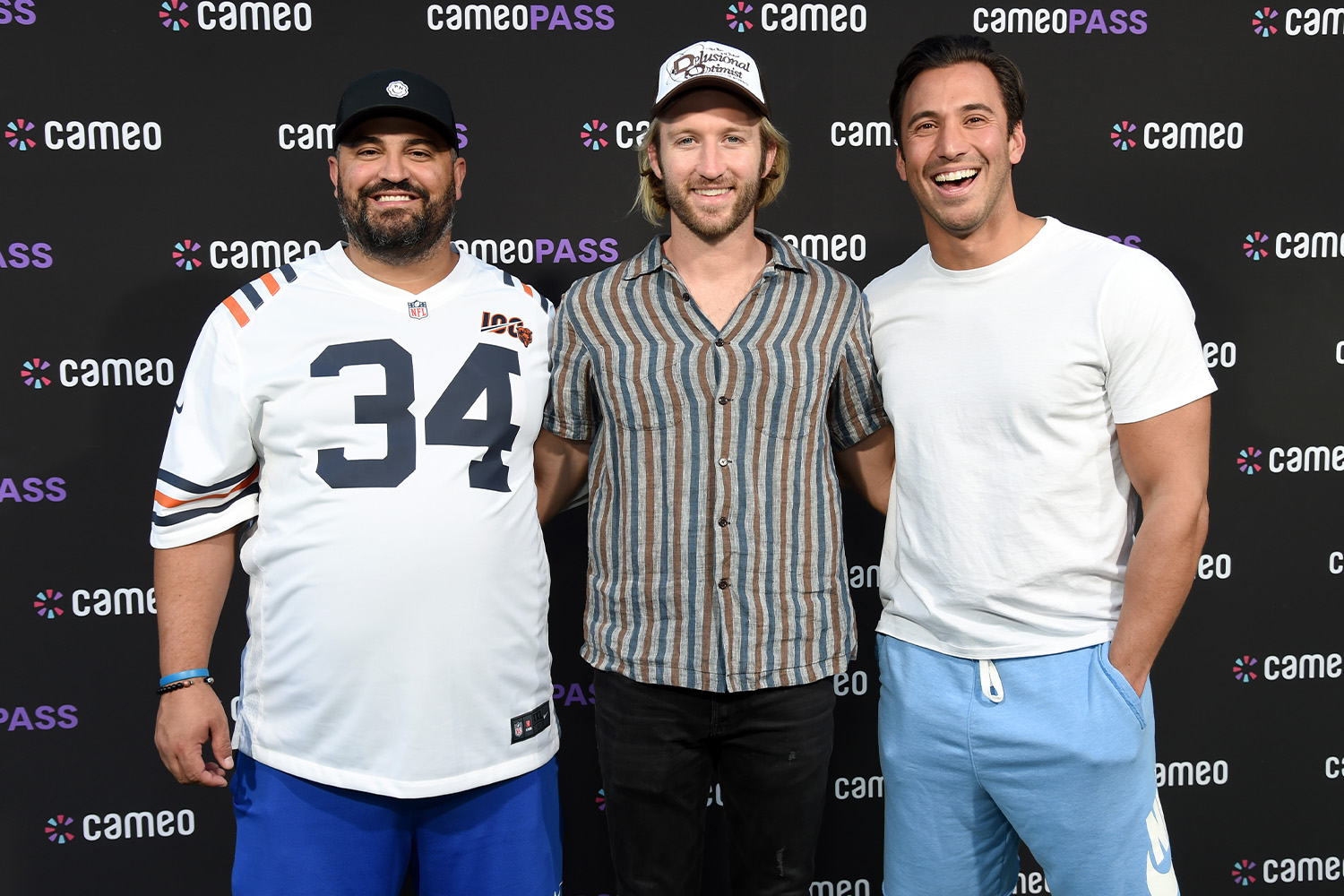
Something like 10,000 new pieces of talent joined Cameo in the last year, bringing the total to 50,000 people and at least two animated characters, Thomas the Tank Engine ($20) and the Boss Baby (also $20). For the record, Cameo keeps 25% of every booking but the talent sets their own prices. Cameo’s brass, however, is happy to offer guidance. For example, Andre Drummond from the Detroit Pistons makes $25 million a year in the NBA; Cameo did the math and figured he was earning $208-per-minute. If he charged $100 for a 30-second Cameo, the talent team reasoned, he was basically getting paid what he was worth.
When in doubt, a gimmick always helps. Brett Favre charges $400 (in part) because his jersey was the number four. Christopher Lloyd—aka Doc Brown from Back to The Future — rates $288 dollars because the DeLorean had to hit 88 miles per hour.
Does the talent get competitive with each other on pricing, I wondered. “There is a big ego with talent, right?” Blencowe said. “If they see one of their teammates that’s 400 bucks, they say, I’m 400 bucks. They don’t necessarily realize it’s been a process. They’ve built themselves up to that number. They’ve built consumer trust.” On that same topic, the comedian Michael Rapoport ($199) said: “I don’t count other people’s pockets. If you charge a lot you probably don’t want to do them as much.” When I asked Michael Cohen if he and Roger Stone intentionally charged the same amount, Cohen sniffed: “Nothing that I do that has any similarity to Roger Stone should be ever declared intentional.”
Less known than the percentage Cameo takes is the referral fee: when talent recruits a friend to start posting videos, Cameo pays them five percent of whatever that newbie earns in the first year—not out of the talent’s pocket, but from Cameo’s own coffers. It’s a brilliant strategy. Bethany Frankel recruited Rapoport who then brought in Tony Hawk (telling him he was making “college money” for the kids). In June of 2022, the musician Kenny G convinced his friend Tyrese from The Fast & The Furious to join Cameo.
Who referred Rudy Giuliani? Who had to on-board Rudy (who is currently on hiatus but has raised his fee from $199 to $349)? “It was Al from Four Seasons Total Landscaping,” joked Blencowe.
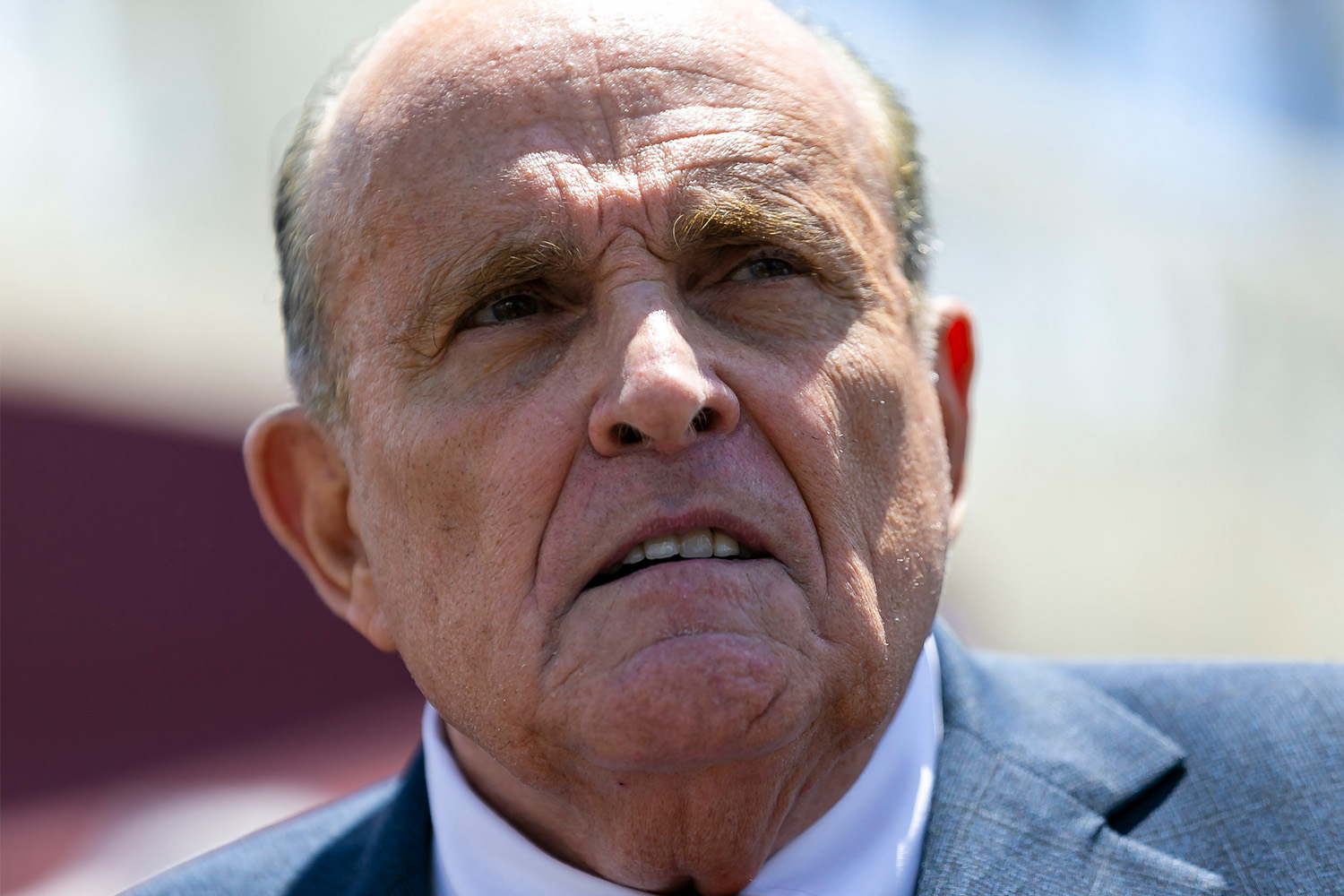
Scrolling through Cameo sometimes feels like perusing the cast of Dancing With the Stars. Sean Spicer! The Mooch! The “She Bangs” kid from American Idol! But there are genuine and impressive surprises: Floyd Mayweather completed the most expensive personal Cameo ever, clocking in at $15,000 for a short pep talk. Jon Bon Jovi was responsible for the second most expensive Cameo at $5,000, as part of a Mother’s Day charity event. Oscar winner Olivia Colman and icon Gloria Steinem have also done Cameos for charity, as have Lil Nas X and Usain Bolt. (According to the company, Cameo has raised more than $1.7 million dollars for charity.)
But, for the talent, it wasn’t just about the money. (Though that obviously helps.) Before Simon Rex won an Independent Spirit Award for Red Rocket, putting him on every casting director’s wish list, he was doing Cameo to pay his bills. He was living on a beach in Bali and would bang out the videos every morning. Sometimes he’d wish people a happy birthday, sometimes they’d ask him to say his Scary Movie catch phrase, “You just hate me because I’m black.”
“I charged 75 bucks a Cameo—I pocket 50—and at the end of the day,” he said, “I just made two hundred bucks and that’s enough to pay for my fucking little hut and my food for the day.”
Rex is no longer on the app, it seems, but if he comes back, my guess is it’s less about the cash than the fan reactions, which turns out to be Cameo’s secret sauce. Rex had showed me a video from a couple who’d bought their 12-year-old daughter a Simon Rex Cameo. On screen, you could see the girl watching Rex’s birthday message to her, shouting: “He said my name!” Rex nearly got choked up.
Still, I had to ask: How does a 12-year-old know who Simon Rex is? “She has cool parents, I guess.”
What was more surprising than the talent on the app, perhaps, were the ways in which customers were using it. In 2021, “divorce reveals” became a big thing. The singer Sugar Ray reported doing something like 15 break-up videos.
Cameo’s CEO reluctantly acknowledged the trend. “I’ve seen people quit their jobs, I’ve seen gender reveals,” Galanis said. “What I’ve learned is that if you can say it, you can say with Cameo.” That’s certainly true. I clicked on the app and watched a couple of Donald Trump Jr.’s recent Cameos ($599), including one where he shared the following news with a couple named Denise and Scott: “Despite the insanity of inflation, conflicts on the verge of World War III, disaster at the border, healthcare going down the drain…Lindsay is having a baby and you guys are going to be grandparents!”
When you think about it, that verbal-political-diarrhea is Don Jr.’s catchphrase. And catchphrases do very well on Cameo, Blencowe had previously told me. It’s why Christopher Lloyd throws “Great Scott!” into every video. When I asked Michael Cohen what his fans typically ask for — and he’s done more than 1,500 Cameos, earning maybe $200,000—he said it’s a lot of birthday greetings. But, in every video, he said: “I make fun of Donald Trump. Are you kidding? I describe Donald as a racist, sexist, misogynistic, xenophobic, homophobic, Islamophobic, anti-Semite germaphobe.”
Cohen—who has a new book out later this year — also said that he went to high school with the creator of HBO’s Entourage, Doug Ellin, and that Cohen is partially responsible for the phrase “Hug it out,” which he’d apparently used on the tennis courts when he was doubles partners with Ellin’s older brother. I have no idea if this is true. Perhaps someone can fact-check this with Emmy winner Jeremy Piven who is now also on Cameo ($349).
Cameo expanded rapidly during the pandemic—maybe too rapidly, it seems — but the demand was there. And the hype was real. In 2019, Galanis received an unsolicited e-mail from Hollywood super-agent Ari Emanuel’s office letting him know that the CEO of WME was in Chicago and would be at his office the next morning. (Galanis cleared his schedule.) Somehow things have only gotten more surreal since. During the pandemic, Galanis took his father to the Super Bowl where they hung out in a luxury suite with Snoop Dogg ($900), Yankees general manager Brian Cashman ($229), and Shaquille O’Neal (not on Cameo!). Elsewhere, Jaws star Richard Dreyfuss ($699) told Blencowe he “keeps his Oscar in the fridge because it’s the coolest place in the house.”
Cameos have been delivered in 221 countries and on every continent. And—smelling a global play — Softbank’s Masayoshi Son opened his checkbook last year, investing in Cameo’s Series C round alongside Hollywood agency UTA, Morgan Stanley’s Counterpoint Global, and Amazon’s Alexa Fund (among others). Masa, as he is known, famously invested $1 billion dollars in WeWork after a single 12-minute meeting with that company’s founder. Was Galanis’s experience anything like that?
“Because of COVID,” he said, “I didn’t get to meet him in person. We did a Zoom. It was 11 o’clock at night. I got on and they’re like, ‘Masa has four minutes’.” They ended up talking for an hour. Blencowe was in the living room; Galanis broke out his high school Japanese briefly — which made Masa laugh — and then the interrogation began.
Said Galanis: “We were talking about raising $100 million and he was basically painting a picture of, ‘What would it look like if you had many times that amount of money? How do you really take over the world?’ He was just trying to challenge me. He was thinking, What if we could go to Japan and Korea and Bollywood right away as opposed to segmenting one market at a time. You’re the category king. Every day that you wait, somebody else can come and try to copy you around the world. Why don’t you just do checkmate right now?”
Galanis was surely grateful for the investment and the counsel. But — perhaps learning from WeWork’s gambles — he took only the money Cameo had asked for.
Even as the coronavirus was waning, Cameo continued to make news. After SNL’s Pete Davidson revealed he was a big fan of 90 Day Fiancé, that show’s breakout star Big Ed made a Cameo for Davidson, inviting the actor to visit him and his mom in San Diego, saying; “We’ll go drink some Malbec or do whatever you want.”
Said Galanis with a laugh: “Every Cameo becomes a commercial for the next one.” Which is both marketing speak and very, very true. Full disclosure: I got my mom a Cameo for her birthday — from an actress on her favorite soap opera, Days Of Our Lives — and she burst into tears. My brother received a Cameo from Ogre from Revenge of the Nerds. While he didn’t cry, it was more memorable than a gift card.
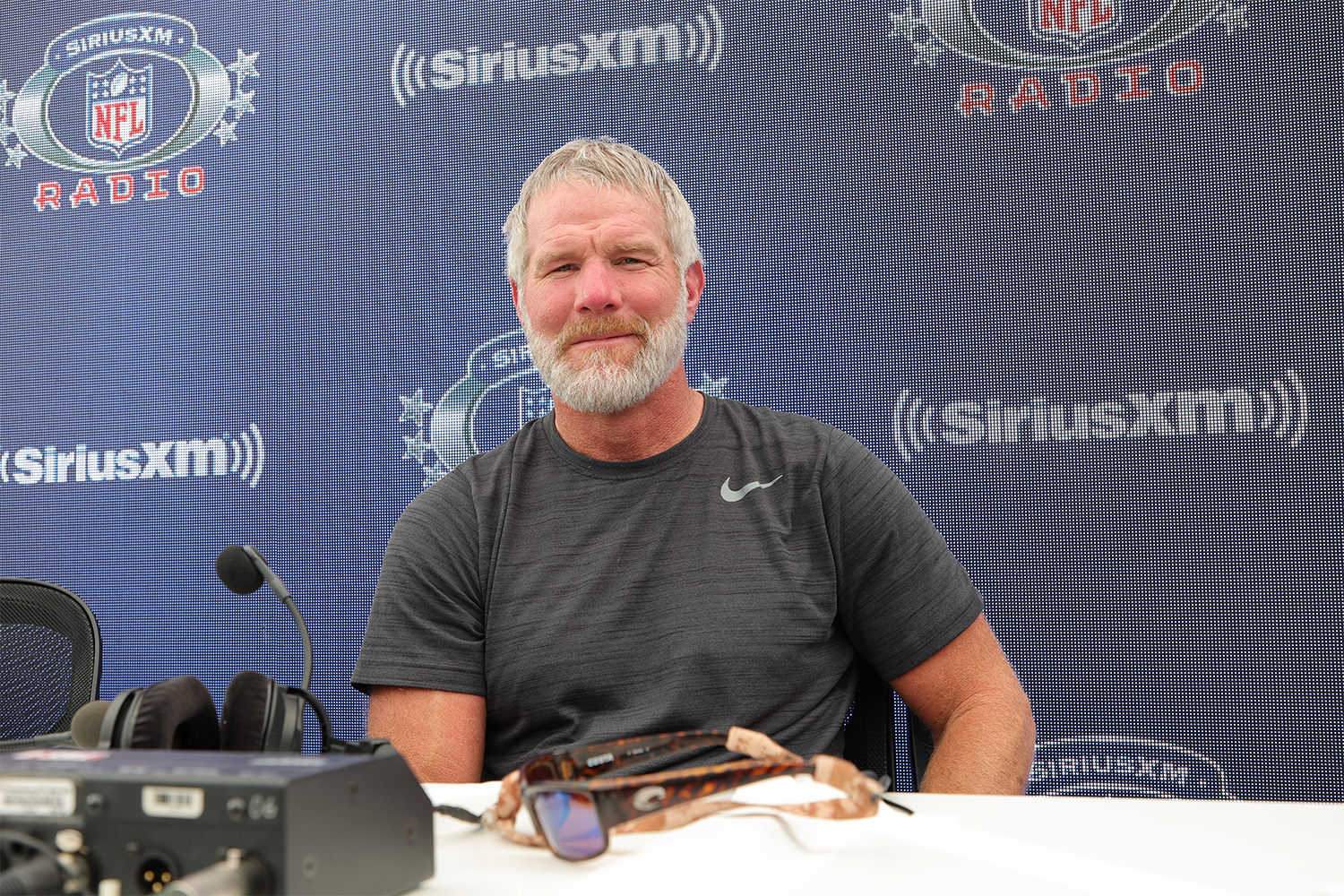
Coming out of the pandemic has been a challenge for Cameo — as it has for many tech companies, it should be noted. In May of 2022, the company laid off 87 people, or roughly 25% of its staff. Galanis told Variety it was “painful” but necessary to “right-size” the business. In 2020, the company had generated around $100 million in gross revenue — up 4.5 times from the previous year. But bookings had slowed. And a hoped-for IPO would have to wait.
“We’re really happy to be private right now,” Galanis told me, and I believe him. “Public companies are getting crushed in the market right now. If we had this interview a year ago, 18 months felt like the appropriate time. Everybody was racing to go public, whether it was through direct listing, SPAC — We were certainly on that trajectory. Then when the music stopped and it became a game of musical chairs, we found our seat. And we’re going to sit in our seat until the music starts playing again.”
The athlete Tony Hawk, who became an investor in Cameo last year, said: “Obviously the exit is always the great finality to investments. But I’m not in a big rush. I trust their decisions.” (During lockdown, he and his daughter watched The Office together; for her birthday, he got her a Cameo from every available member of the show.)
Cameo has been working to expand its offerings, turning one of their more annoying headaches into a new revenue stream: Cameo for Business. A few years ago, the team explained, they’d noticed Brett Favre was turning down around five percent of requests. “It wasn’t Chicago Bears fans telling Brett to say the Packers sucked,” Galanis explained, “it was a car dealership in Waukesha, Wisconsin trying to get Brett Favre to get people to come out for the Labor Day sale.” Essentially they wanted a Brett Favre commercial for $400.
Tony Hawk had seen the same thing. People weren’t even shy about it, he said, with people asking him to say, “This is the best coffee in the world!” He added: “Some get more sneaky. Like, Say this phrase! We love it when people say this phrase! I look it up and it’s the company name.”
Cameo for Business was introduced in 2020 with a different pay scale. Infiniti ran a promotion for their QX60 SUV in which customer questions were answered by Cameos from Olympic gold medalist Gabby Douglas, Fox Sports’s Erin Andrews and The West Wing’s Dule Hill. In the UK, Bud Light partnered with Cameo on Bud Light Birthday Shoutouts (which apparently did significantly better on Snapchat than some of the brand’s previous content). Cameo for Business now accounts for approximately 20% of the company’s revenue, Galanis spit-balled–up from zero percent two years ago–and Cameo is now getting into booking talent for IRL events, recently booking a musician to play a corporate retreat for six figures.
Competitors will likely follow. Facebook—sorry, Meta—had previously announced a Cameo killer called Super. Though I couldn’t find much about the service since its announcement. “We haven’t found anything about it either,” Blencowe smirked. “If you find anything in your research let us know.” Google had also been working on something that was maybe more of a celebrity Q&A product. It’s unclear where that one stands, but Google is now an investor in Cameo. (Said Galanis: “We’re much happier to have them on our side now than being enemies with them or whatever.”)
Last fall, Cameo made their first acquisition, buying the celebrity merch company, Represent, for an undisclosed sum. I don’t know anything about the market for merch — presumably it’s huge — but the deal certainly makes sense as a gateway drug to Cameo. Represent did some merch for the much-hyped Friends reunion. Imagine Jennifer Aniston was also doing Cameos as part of that same deal?
Attracting new talent — or feeding the beast — is a big part of the game. Blencowe’s White Whale, he says, is Arnold Schwarzenegger. The Rock’s name also came up in conversation with the three founders. Cameo’s founders were thrilled by the recent NCAA ruling allowing college athletes to profit off their own likeness. The talent team — which at one point had 70+ people — almost immediately started recruiting athletes from marquee programs like Duke basketball and Notre Dame football. More than 470 college athletes have since joined Cameo. Who’s been a breakout hit? “It’s not obvious who those people were going to be,” Galanis said. He was excited to share that Montana Fouts from Alabama’s softball team has been crushing it on Cameo.
While only a small percentage of these athletes will ever go pro, that doesn’t matter. “The next Tom Brady,” said Galanis, “he’s going to join Cameo when he’s a freshman in Michigan. This will be part of his creator stack in the same way he uses Instagram or YouTube or Snapchat. Then we don’t have to try to get him when’s made half a billion dollars and won seven championships.”
Thanks for reading InsideHook.
Sign up for our daily newsletter to get more stories just like this.
